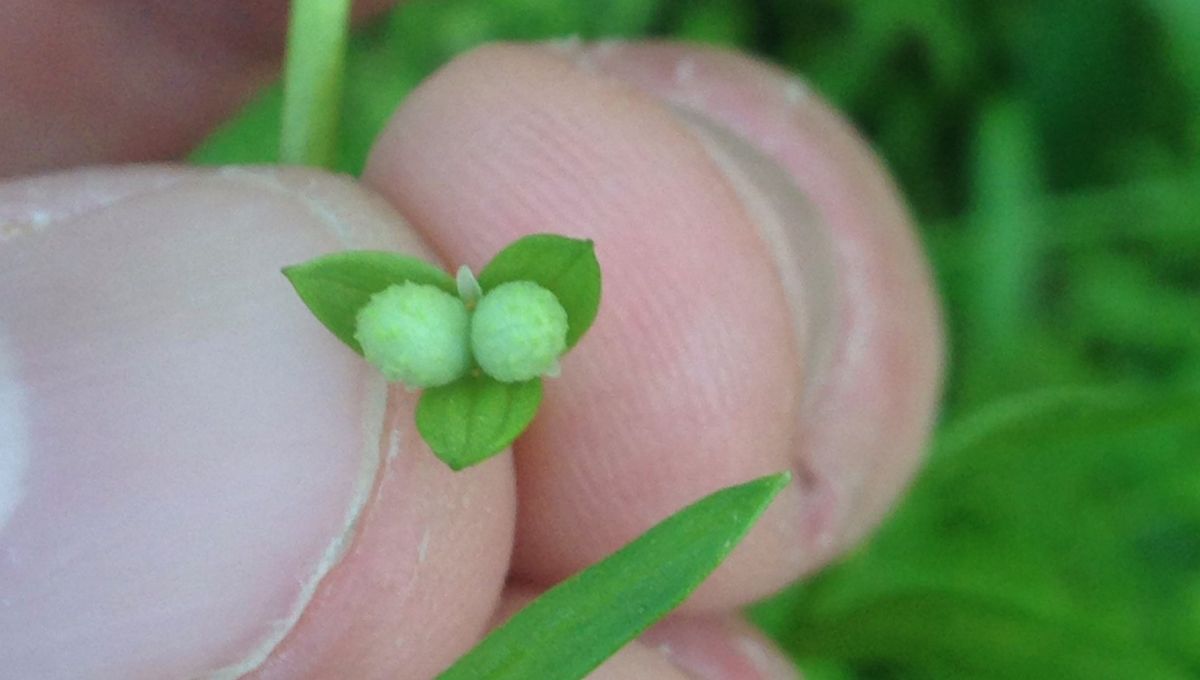
After a years-long hunt, Vermont botanists have rediscovered a floodplain-dwelling plant species that hadn’t been seen in the state since 1916.
When it comes to the search for false mermaid-weed (Floerkea proserpinacoides), it’s not exactly an understatement to say it’s like looking for a needle in a haystack. The plant is small, making it hard enough to spot among the many taller plants living alongside it.
And if you thought its flower might make it more obvious, you’d be wrong – some are only the size of a pin head. Coupled with a short blooming period of around four to six weeks a year, there’s a lot working against anyone trying to find the plant.
But 108 years after false mermaid-weed was last spotted in Vermont, Molly Parren, a turtle technician from the Vermont Fish and Wildlife Department, inadvertently snapped a picture of it whilst visiting a streamside parcel on private land and sent it to her botanist colleague.
“When I opened up the photo that she had sent, there was this little weird plant in the corner of the frame. And when I zoomed in, I immediately knew that it was Floerkea, that it was false mermaid-weed,” Grace Glynn, a botanist at the Vermont Fish and Wildlife Department, told Vermont Public. “I couldn’t believe that I was finally seeing this plant.”
According to a social media post from the department, Glynn then visited the site and confirmed the presence of the plant, as well as further specimens in a public conservation area downstream.
Even considering its miniature size, it was a surprise to find false mermaid-weed in the state after all this time – though it’s native to and fairly common in multiple states in the US.
“False mermaid-weed is a floodplain plant, and historic populations are believed to have been destroyed by some common challenges facing Vermont’s floodplains: extreme floods, invasive species, and development,” said the department.
“The fact that the newly rediscovered population of false mermaid-weed has been able to persist in good quality habitat – on both private and protected land in Addison County – for over a century is a sign that good stewardship by landowners and conservation organizations really can make a difference.”
With the plant only blooming for a short period, it’ll be a year before the rediscovered patch can be surveyed in more detail. In doing so, it’s hope that botanists will learn more about how false mermaid-weed can be conserved.
“Ultimately, we want to know how we can help this species flourish in Vermont in the future,” Glynn told VTDigger.
Source Link: Tiny Plant Thought Extinct In Vermont Accidentally Rediscovered Over 100 Years Later